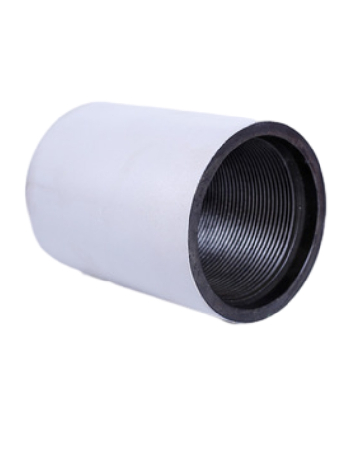- Afrikaans
- Albanian
- Amharic
- Arabic
- Armenian
- Azerbaijani
- Basque
- Belarusian
- Bengali
- Bosnian
- Bulgarian
- Catalan
- Cebuano
- Corsican
- Croatian
- Czech
- Danish
- Dutch
- English
- Esperanto
- Estonian
- Finnish
- French
- Frisian
- Galician
- Georgian
- German
- Greek
- Gujarati
- Haitian Creole
- hausa
- hawaiian
- Hebrew
- Hindi
- Miao
- Hungarian
- Icelandic
- igbo
- Indonesian
- irish
- Italian
- Japanese
- Javanese
- Kannada
- kazakh
- Khmer
- Rwandese
- Korean
- Kurdish
- Kyrgyz
- Lao
- Latin
- Latvian
- Lithuanian
- Luxembourgish
- Macedonian
- Malgashi
- Malay
- Malayalam
- Maltese
- Maori
- Marathi
- Mongolian
- Myanmar
- Nepali
- Norwegian
- Norwegian
- Occitan
- Pashto
- Persian
- Polish
- Portuguese
- Punjabi
- Romanian
- Russian
- Samoan
- Scottish Gaelic
- Serbian
- Sesotho
- Shona
- Sindhi
- Sinhala
- Slovak
- Slovenian
- Somali
- Spanish
- Sundanese
- Swahili
- Swedish
- Tagalog
- Tajik
- Tamil
- Tatar
- Telugu
- Thai
- Turkish
- Turkmen
- Ukrainian
- Urdu
- Uighur
- Uzbek
- Vietnamese
- Welsh
- Bantu
- Yiddish
- Yoruba
- Zulu
crossover sub drilling
Crossover Sub Drilling A Comprehensive Overview
Crossover sub drilling, often known as crossover subs, plays a crucial role in the drilling industry, especially in the realm of oil and gas exploration and production. This technology is essential in various drilling applications, including geothermal energy development, water well drilling, and mining operations. The importance of crossover subs lies in their ability to facilitate the smooth transition between different drilling systems, enhancing the efficiency and safety of drilling operations.
Understanding Crossover Sub Drilling
Crossover subs are specialized components that connect different types of drill strings or drilling equipment. They allow for the seamless transfer of drilling power and fluid between dissimilar rigs or drilling techniques, such as switching from a rotary drilling system to a directional drilling system. This flexibility is vital in complex geological formations where conventional drilling methods may not be as effective.
The primary function of a crossover sub is to accommodate various thread types, diameters, and connection styles. For instance, a crossover sub can enable the use of a larger diameter drill bit while still being compatible with the existing drill string. This adaptability helps in optimizing drilling performance, reducing downtime, and ensuring that drilling operations can continue smoothly despite changes in equipment.
Benefits of Crossover Sub Drilling
1. Enhanced Flexibility One of the most significant advantages of crossover subs is the flexibility they offer. In a rapidly changing drilling environment, operators can easily swap out equipment and adapt their drilling strategies without needing to overhaul the entire drill string.
2. Improved Efficiency By facilitating the use of various drilling tools, crossover subs can enhance the overall efficiency of drilling operations. This efficiency translates into cost savings, as less time is spent on rig modification and setup.
crossover sub drilling

3. Safety Improvements Crossover subs also contribute to improved safety in drilling operations. By minimizing the need for extensive modifications and allowing for quicker adjustments, the risk of accidents or failures during the drilling process is significantly reduced.
4. Adaptation to Geological Variability Different geological formations may require different types of drilling techniques. Crossover subs allow operators to adapt quickly to changes in the subsurface environment. For example, the linkage between rotary and directional drilling technologies can be crucial in navigating complex formations.
Applications and Innovations
In recent years, the demand for crossover sub drilling has grown, driven by advancements in technology and an increasing need for sustainable drilling practices. Innovations such as high-strength materials and smart technology integration, including monitoring systems that provide real-time data, have made crossover subs even more effective. These advancements help operators make informed decisions on drilling strategies and quickly respond to geological challenges.
Moreover, the global push towards cleaner energy sources has led to greater exploration of geothermal energy, making crossover subs critical in expanding the reach of drilling into new, underutilized areas.
Conclusion
Crossover sub drilling represents a vital component of modern drilling operations. With their ability to facilitate flexibility, enhance efficiency, and improve safety, crossover subs are indispensable in the pursuit of energy resources. As the industry continues to evolve and face new challenges, the role of crossover subs will likely expand, driven by innovations and the ever-growing demand for sustainable energy solutions. Understanding this technology is essential for engineers, drill operators, and stakeholders in the energy sector as they navigate the complexities of contemporary drilling projects.
-
Tubing Pup Joints: Essential Components for Oil and Gas OperationsNewsJul.10,2025
-
Pup Joints: Essential Components for Reliable Drilling OperationsNewsJul.10,2025
-
Pipe Couplings: Connecting Your World EfficientlyNewsJul.10,2025
-
Mastering Oilfield Operations with Quality Tubing and CasingNewsJul.10,2025
-
High-Quality Casing Couplings for Every NeedNewsJul.10,2025
-
Boost Your Drilling Efficiency with Premium Crossover Tools & Seating NipplesNewsJul.10,2025







